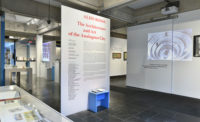In 1976, when Aldo Rossi added an introductory essay to the Italian edition of Étienne-Louis Boullée’s Architecture, Essay on Art, he quoted Denis Diderot. Commenting on the siting of Place Louis XV in Paris, Diderot stated that he would not have cleared the forest there—that it would have been better to let people peer into the bosque’s shadowy depths from between the columns of a peristyle. In so doing, the French philosopher criticized unimaginative architects who could otherwise tap into ideas “awakened by the environment and surrounding objects.”
Historian Antonello Boschi’s thinking fits into this conception of architecture. In our current predicament, when architectural discourse has seemingly run rampant from building—consider the recent (and many) speculations about the digital, big data, and artificial intelligence; about climate, the Anthropocene, and forestry; about political rights and gender; and how architectural education has generally blurred into equivocal practices of “co-teaching” and “co-learning”—his book stands out for what many new thinkers might deridingly identify as a certain outdatedness. I am neither a Rossi loyalist nor a supporter of projects that primarily depend on their context, but I do believe in the disciplinary status of architecture—and Boschi demonstrates why such specificity is necessary and useful for the precise moment in which we live.
The substantial, nearly 500-page volume makes its subject matter apparent from the title: that which exists between the building and the street. The subtitle circumscribes it even more: phenomenology and the facade. But it is Boschi’s treatment of this subject matter, which is tied to contextual threads spun from the built environment more generally, that produces a richly interwoven tapestry. For him, facades are even more significant when their context has been appropriately considered and observed.
The author has divided the book into four chapters: “Paths,” “Readings,” “Itineraries,” and “Marginalia.” The fourth, however, is perhaps the most interesting, providing a comparative historical etymology of the term facade and its derivatives, beginning in 1612 with the definition given in the Vocabolario degli Accademici della Crusca, and moving on to those in Diderot and d’Alembert’s Encyclopédie and in dictionaries authored by Quatremère de Quincy, Eugène Viollet-le-Duc, and Niccolò Tommaseo, among others. The third chapter also offers a selection of valuable case studies divided by type: “Facades between facades,” which identifies projects by Felix Claus & Kees Kaan, Giorgio Grassi, Herzog & de Meuron, Umberto Riva, and Waro Kishi; “Facades en face,” which deals with the corner (enter Álvaro Siza, Rafael Moneo, and Robert Venturi); and “Isolated facades,” with one example, by Juan Navarro Baldeweg.
Supplementing the text is a lavishly illustrated set of plates featuring 334 pictures. Readers will discover Mannerist Roman palaces; the nuances between the architectural orders and rustication in the works of Michelangelo, Giulio Romano, Jacopo Sansovino, and Michele Sanmicheli; the continuous facades of the Piazza Ducale of Vigevano and the Palazzata of Messina; John Nash’s Regent Street in London; French hôtels particuliers; and references to 18th-century books on the marvels of antiquity: Athens, Herculaneum, Palmyra, Baalbek, Paestum, and Split.
Boschi’s bibliographical notes, equally rich in references, express a dialectical openness. On one hand, there are such figures as Heidegger, Norberg-Schulz, Rykwert; on the other, Wölfflin, Panofsky, and Wittkower—to say nothing of the many treatise writers and scholars, from Alberti and Durand to Eisenman and Venturi, who make occasional appearances.
Between the Building and the Street is so steeped in history and information that, at times, it fails to escape a kind of fragmentary nature—perhaps unavoidable given its denseness. But the project of architecture requires, first and foremost, knowledge of buildings and the city. The goings-on in other fields may certainly affect the discipline, but they will only ever remain ancillary to the architect’s work. Boschi’s book is a learned one, suited for those who still want to discuss architecture and cities, albeit from very different—yet still disciplinary—vantage points.




